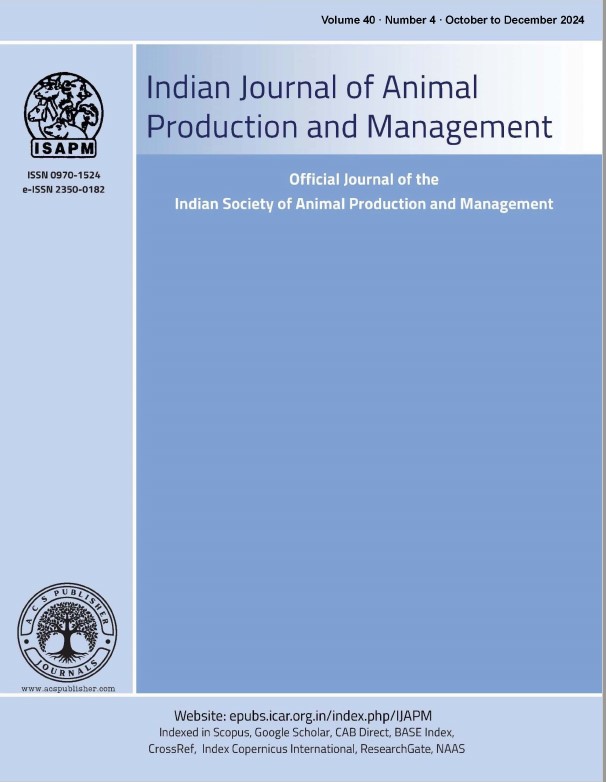ECONOMICS OF INTEGRATED FARMING IN ASSAM
Keywords:
Benefit cost ratio, integrated farming system, pig-fish-vegetableAbstract
A study was carried out under NAIP component-3 sub-project in Gosaigaon area of Kokrajhar district which involved integration of 2(two) indigenous sows and 1(one) Hampshire male pig to 450 m2 water surface area. Two months old piglets were reared for six months. Thus two batches of pigs were reared in integration with one crop of fish in a year. Fertilized pond water enriched with blue-green algae was used for irrigating horticultural crops i.e. okra in Kharif season and cabbage in the Rabi season cultivated at marginal area measuring 1000 m2 on the bank of the pond. Fish species like catla, rohu, mrigal, grass carp and silver carp were released in the ponds @8,888 per ha. The field trial revealed a 5000 kg fish per ha per year. The average yield of fish was 2.11 quintal after one year in a 450 m2 pond area. An average of 2.4 and 2.87 quintal of cabbage and okra respectively was harvested in an area of 1000 m2 each. Income from 2 batches of 3 pigs each was raised from 19,000.00 to Rs. 65,750.00 at the end of the year. The benefit cost ratio (BCR) of integrated farming over traditional system was calculated to be 3.29:1 vs 1.4:1. Further the system helped complete recycling of pig sludge and there is a continuous horizontal extension of pig breed improvement activity among the pig farmers.

